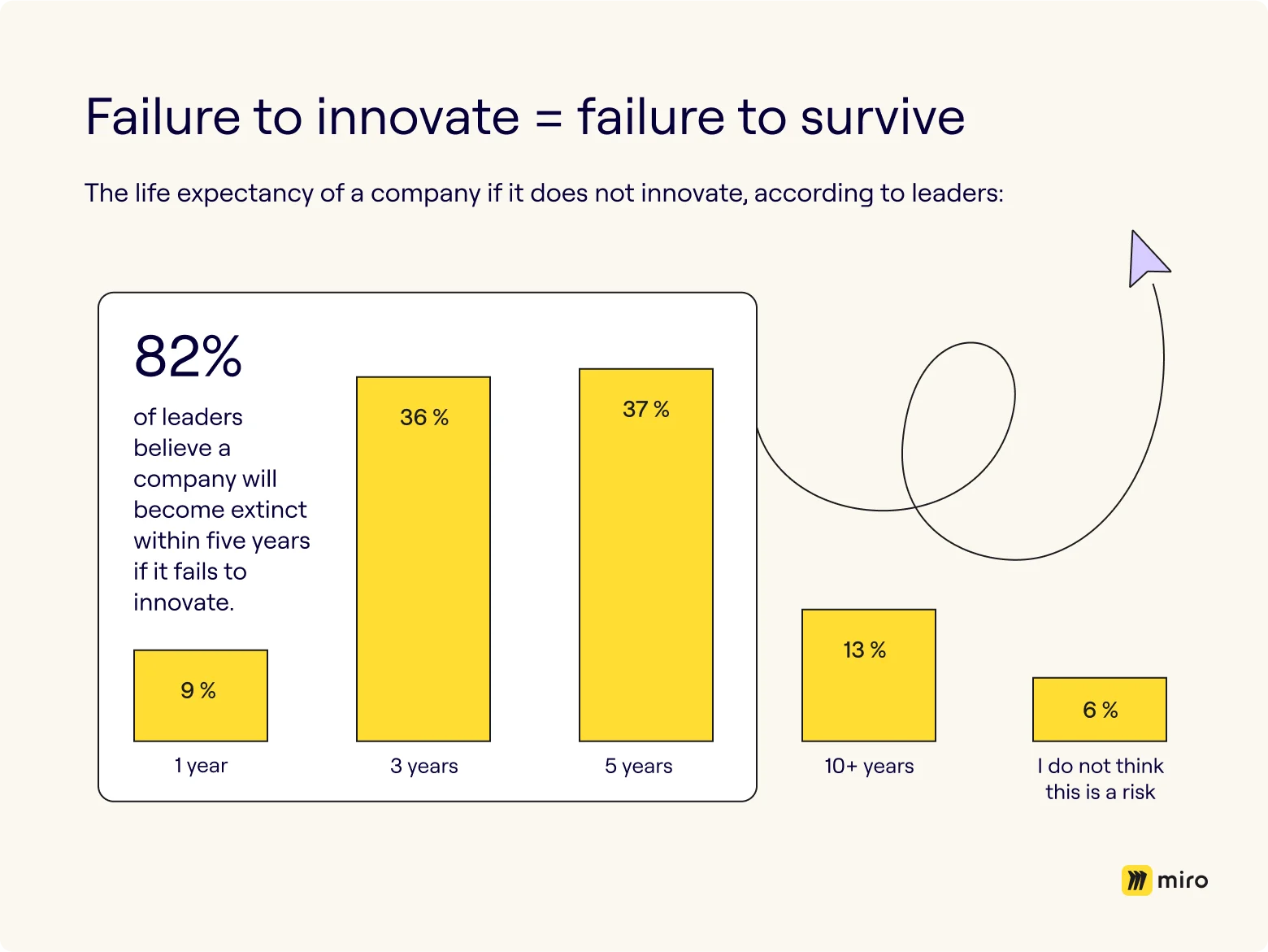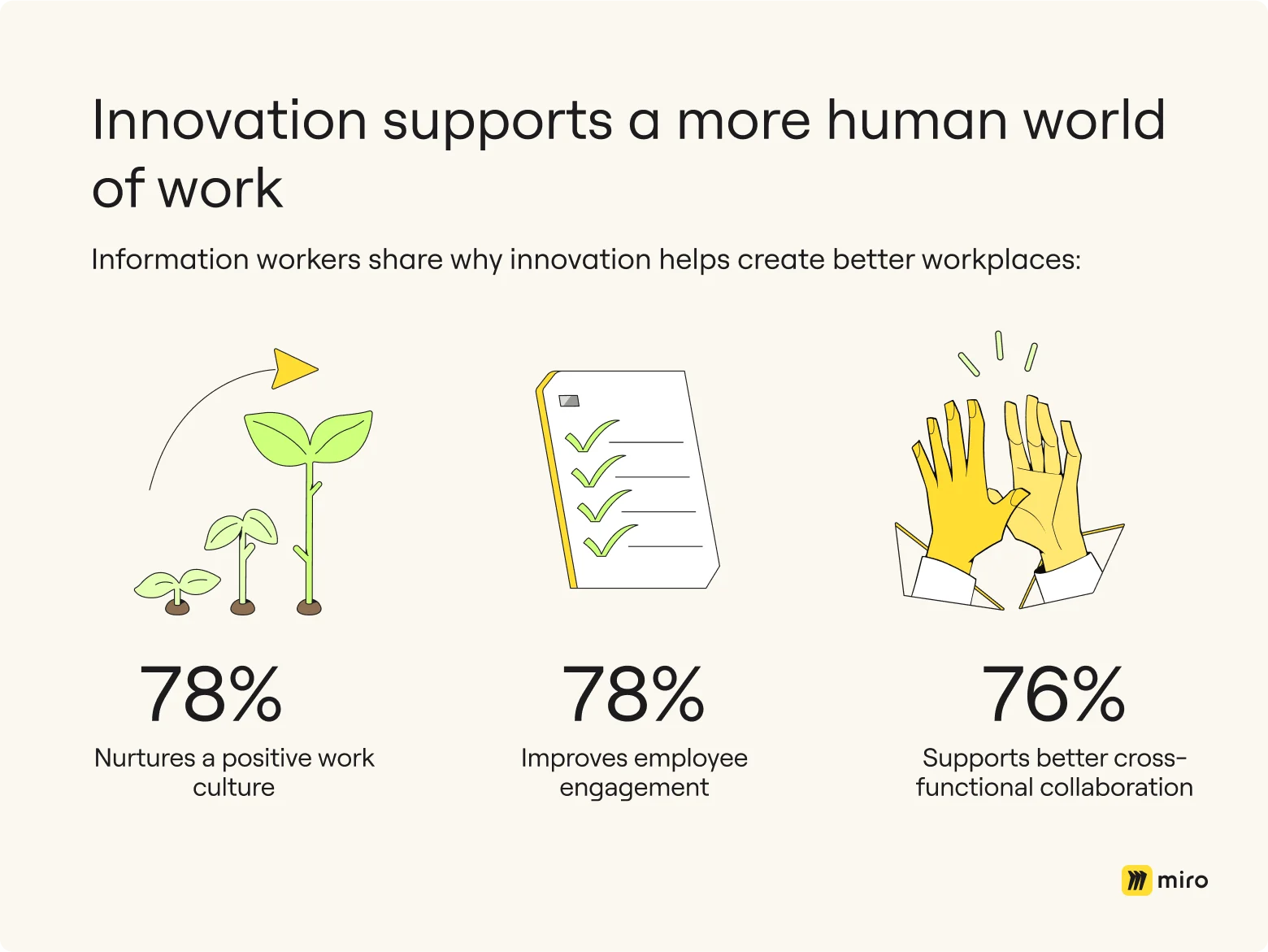What are three words that come to mind when you hear the word “innovation?”
That’s exactly what we asked a dozen enterprise product leaders when conducting interviews with them earlier this year. Their answers — which included words like complexity, consumer, transformation, and fun — show just how unique and varied perspectives on innovation can be.
While its exact meaning may defy boundaries, what’s clear is that innovation is woven into the very fabric of successful modern enterprises, appearing everywhere from business strategy to product development processes and company culture.
Here are a few of the key through-lines that emerged from our interviews.
Innovation is…challenging
Key words mentioned: unknown, hard, cost, legacy challenges, complexity, essential
We know from our previous global research that enterprise leaders are nearly unanimous in their agreement that innovation is both urgent and crucial to survival, yet more than half of leaders see it as more of a luxury than a necessity. What gives?

In short: innovation is hard to achieve. The data suggests economic uncertainty, fear, and outdated technology as the main challenges businesses face when it comes to innovation. So it was fairly unsurprising that a number of our recently interviewed leaders would apply words such as “complexity, “hard,” and “legacy challenges” to define innovation.
The consistency reinforces this sentiment that fear of the unknown may lower an organization’s tolerance for risk and, ultimately, hinder innovation. If this sounds familiar, consider some simple principles for how to inspire innovation during uncertain times:
- Keep innovation in conversations, always
- Use that uncertainty as inspiration for innovation
- Meaningfully support worker wellbeing
Learn more on how to inspire innovation during uncertain times →
Innovation is…customer-centric
Key words mentioned: needs, customer-centric, problem, consumer, solution
Another recurring theme at the heart of recent innovation discussions is a steadfast focus on the customer. Perhaps it looks like diving deep to uncover true consumer needs, or using those pain points to inform, develop, and deliver more effective business solutions. At the end of the day, it’s all about the customer.
So it’s no coincidence that organizations who seek to unlock their full innovation potential also put customer centricity at the forefront of their business strategy. In addition to “customer-centric,” several leaders interviewed surfaced the words “consumer,” “needs,” and “solution” in thinking about innovation.
But much like innovation itself, there’s no magic formula to achieving customer centricity overnight. Instead, it may require an overhaul of company culture or evaluating existing organizational mindsets. Some additional strategies to try:
- Establish cross-functional teams to work together in sharing customer insights
- Embrace Agile principles to boost organizational capabilities to respond to change
- Build an organizational culture of continuous learning and development
Keep reading about how to overcome the roadblocks to customer centricity →
Innovation is…a disruptive force
Key words mentioned: transformation, change, disruption, driven, imagination, creativity
The aforementioned global innovation survey also shows that a whopping 80% of leaders agree that innovation helps their companies win against the competition, while 79% call it necessary to win against the competition.
What’s key to outpacing your competition? Disruption. Needless to say, several leaders brought up the term — along with derivatives such as “change” and “transformation.”
Also worth noting were the mentions of “creativity” and “imagination,” clear driving forces behind both disruption and innovation. While it may not be enough for an organization to simply be creative or imaginative, putting it together as a one-two punch with a more innovation-focused strategic business plan, like this 4-step roadmap to innovation, can help you get the job done.
Ready for more? See how to overcome the top strategic roadblocks to innovation →
Innovation is…a world of potential and possibilities
Key words mentioned: enablement, potential, fun, rewarding, portfolio, differentiated, latitude
Innovation is good for business and people — and leaders echoed that sentiment with words like “rewarding,” “fun,” and even “latitude” as part of our “innovation is…” exercise.
It can be all too easy for leaders to get caught up in making the business case for innovation without pausing to think about some of the major benefits it can offer from a more human perspective. Those include nurturing a more positive work culture, improving employee engagement, and supporting better cross-functional collaboration, among others:

Additionally, a deeper dive into the data reveals that a focus on innovation contributes directly to employee satisfaction. Enabling workers to innovate as a means to enjoy themselves and their work can:
- Help businesses attract and retain talent
- Drive a better workplace culture
- Remove silos and enable employees to work better together
Discover more reasons why focusing on innovation benefits the whole team →
Defining innovation is unique to an organization
There’s (clearly) no single way to ascribe meaning to how innovation manifests in an enterprise. Instead of trying to mold your organization to fit someone else’s definition of what innovation is, experiment with some of the principles and strategies discussed to explore what it can — and already does — look like within the context of your business.




